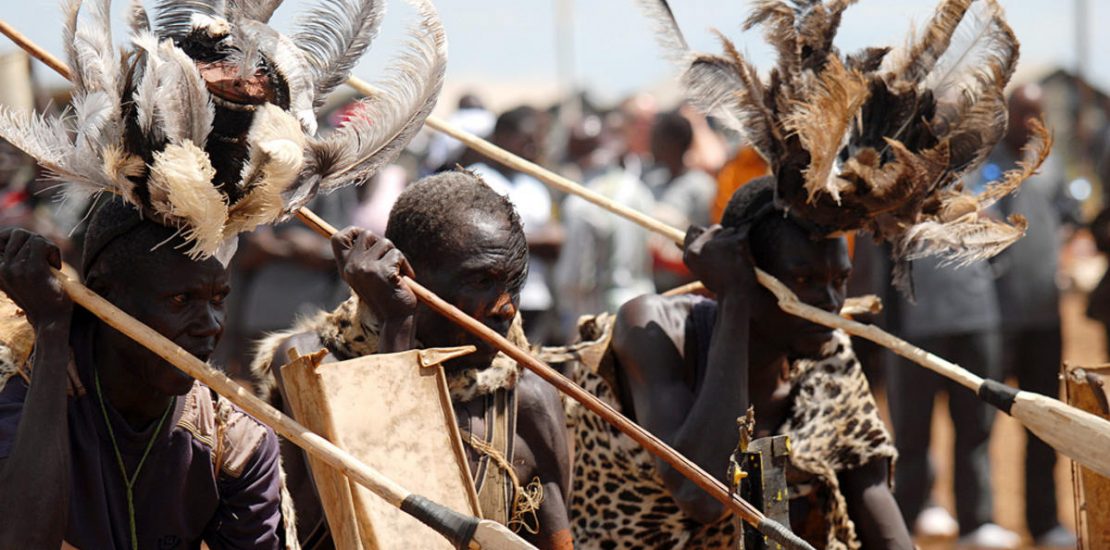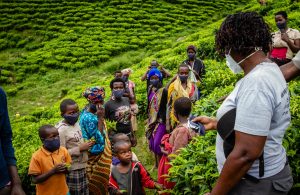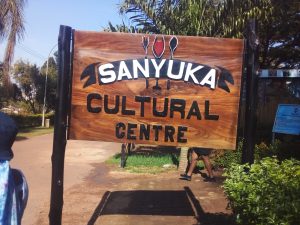- March 18, 2021
- Posted by: Administrator2
- Categories: Blog, Uncategorized

Amazing Cultural Encounters in Uganda
Diverse and rich in its cultures, Uganda is home to authentic, indigenous cultural encounters available to be experienced at any time. Beyond mountain gorilla trekking, chimpanzee tracking, tree-climbing lions tracking, mountain hiking, boat cruises, game drives, city tours, and hiking to the top of waterfalls, there is more that Uganda has got to offer. One of them is the amazing cultural safaris.
Besides the beautiful wildlife and scenic landscapes in the Pearl. Uganda has continually proven to be among the top tourist destinations in Africa and the whole world. This is seen with the hospital people, good climate, adventures, and many more. One of the reasons why cultural encounters are an important safari activity is that those who do it get an opportunity of seeing the world from different points of view. The harmonious relationships and co-existence among African cultures – Uganda to be specific confirms the words of President Barack Obama said in Westminster Hall. He said that “People can be united by their ideas rather than their differences.”
Uganda Cultural Safaris
Cultural encounters in Uganda are a lifetime experience, with about 54 tribes. Each is unique in language, traditions, beliefs, lifestyle, and cuisine. An encounter with one of these tribes exposes the hidden, rich, and unexplored culture of Uganda. Each cultural encounter on a Uganda safari comes with learning about the cultural back ground of that particular group. Take on a Uganda Cultural tour and enjoy an ultimate safari experience.
Embarking on an amazing Uganda Cultural safari gives you an opportunity to dive into the diverse cultures of this mighty nation. We are not talking about just culture but a real African-born culture. This implies that you will spend two or more hours within the local communities while participating in different activities. These activities range from traditional dancing, digging using simple tools such as hoes, backcloth making, preparing traditional food, brewing local beer, making crafts, and many more.
Different Regions and Different Cultures in Uganda
With 9 indigenous communities located in the four regions of Uganda, north, west, east and central Uganda. The cultural tribes located in these regions are worth Visiting on a Uganda safari.
Northern Region
The northern region of Uganda is mainly occupied by the Nilotics, Nilohamitics, and the sudanics. The tribes in the northern region of the pearl include; Madi, Lugbara, Lendu, Tepeth, Labwor, Pokot, Sebei, Kakwa, Kumam, Karamojong, Teso, Jonan, Lulya, Padhola, Alur, Acholia, and the Lango.
For tourists that want to explore the northern region of Uganda, the Ik people, Karamojong, and Manyatta people are a must-see on a Uganda cultural encounter safari. These people are located near northeastern Uganda. A visit to Kidepo Valley national park and a stopover at one of the cultural villages entices the whole travel experience.
Eastern Region
The eastern region is occupied by Bagisu, Bagwe (Samia–Bugwe), Bagwere, Balamogi, Banyala, Banyabindi, Banyole, and Basamya to mention but a few. The central region is mainly dominated by the Baganda, which is the most prominent ethnic group in the region. The Banyala people occupy the central region together with the Baganda. Taking on Uganda’s cultural encounters safari to eastern region is a rewarding experience. Visit the Cultural heritage sites that turn moments into memories.
Western Region

The western region, also known as “land-of-milk-and-honey” is occupied by Bafumbira, Bahororo, Bakiga, Batooro, Banyankole, Banyoro, Batwa, Bakonjo, Bagungu, Baruuli, Basongora, and the Batuku.
Cultural encounters in Uganda are mainly dominated by visits to the ethnic tribes and people. The cultural practices like the “Imbalu” from eastern Uganda. Has captured the attention of most tourists to come to visit and experience the dance and culture of the eastern people.
The Batwa pygmies in southwestern Uganda, are one of the major local tribes visited by visitors. The Batwa are located in Bwindi Impenetrable national park and Mgahinga national park. The authentic history, way of life, and traditions of the Batwa people are an experience desired by many. A visit to their community, traditions dances, story tales, and hunting practice is a lifetime discovery to be encountered.
Cultural encounters in Uganda can be experienced through different ancient establishments across the country. Different Cultures in Uganda can be met at the different physical safari destinations. The Sezibwa falls in Mukono, Nakayima tree tin Mubende, Sempaya hot springs, and Kitagata hot springs.
Cultural encounters for a spiritual and traditional significance
These sites have both spiritual and traditional meanings attached to the local residents. These places hold great cultural beliefs, for some local residents. Local residents and traditional healers visit these places for consultation with the ancestors and the like.
Other places such as Royal palaces, Royal tombs, and shrines, avail more about Uganda’s different cultures. A visit to the Uganda museum is another source and discovery of the different history and past cultures of the pearl. You will get an authentic cultural encounter upon visiting these sites.
A one-day Kampala city tour gives an insight into the different cultural sites on a Uganda safari. The Uganda museum, Bulange Mengo, Kasubi tombs, the African village, and monuments.
Cultural safaris in Uganda give a different look and perspective to every safari. These install appreciation of the difference of every unique culture. The authenticity and uniqueness of every culture encourage the sustainable preservation of these cultures. Despite global industrialization; cultural groups, tribes, and communities have to be conserved with equal efforts of tourists and the Tourism regulatory bodies in Uganda.
The languages, cuisine, dress code, norms, traditional values, customs, and morals of each culture in Uganda are unique to their own. A visit to explore and uncover the indigenous tribes and cultures of Uganda is truly mind-blowing. Every tourist shouldn’t miss out these on their safari to Uganda.
Top Cultural sites in Uganda

Igongo Cultural Center
Located in western Uganda in Biharwe town at the entrance of Mbarara city, Igongo Cultural center is a privately owned cultural and heritage site. It is worth every traveler’s attention. At this center, travelers make stopovers as they visit the western circuit national parks. These include; Lake Mburo national park, Queen Elizabeth national park, Mgahinga gorilla national park, and Bwindi Impenetrable national par, and Lake Bunyonyi. At Igongo cultural center, you get an opportunity to dive into the Banyakitara (Banyankole culture). These are the dominant and ancient occupants of western Uganda. They also visit the museum therein as well as the library. They also get a detailed insight into the traditions of the Banyankole.
Learning about culture totems, food taboos, kingship, servanthood, traditional dances, kingdom emblem, and other cultural encounters gives a mesmerizing experience. Adding the Igongo cultural center to your Uganda safari trip makes it varied hence the best safari one can have in Africa. At Igongo Cultural center, travelers get an opportunity of visiting the historical Eclipse Monument uphill. This is where you get an opportunity to learn about the toughness of traditional African kings and how they integrated nature into their lifestyles and beliefs. You also enjoy the extensive scenic views of the surrounding hills and valleys including those of Mbarara city.
Kasubi tombs
Located just 6 kilometers from Kampala city center, Kasubi Royal tombs are a UNESCO Heritage site and a prime tourist destination. It is one of the major cultural destinations and many tour operators serve this site as part of Kampala city tours. Visiting this site can be easily combined with a visit to Old Kampala Mosque, Makerere University, Uganda Museum, Bahai temple, Namugongo martyr’s shrine, Kabaka’s Lake (Africa’s largest man-made lake), Uganda Wildlife Education Center (UWEC), etc. At Kasubi Royal tombs, kings of the Buganda kingdom are buried. Four Kings of Buganda are buried in the tombs including Mutesa II, Mwanga II, Daudi Chwa, and Mutesa I. It is important that while you plan a trip to Uganda, you add visiting the Kasubi Royal tombs and have a great Uganda cultural encounter.
The Bulange Lukiiko – Buganda Parliament
Usually, the Buganda Kingdom Cultural safari starts with a visit to the Buganda Kingdom Lukiiko (Parliament) administrative block at Bulange – Mengo. It is here that you enjoy views of the foreground large statue (Africa’s biggest Kingdom Monument) of the reigning King Muwenda Mutebi II, in recognition of his efforts towards the restoration of the Kingdom in 1993. Also in the foreground are flagpoles which at given occasion fly the flags of the 52 clans of the Kingdom of Buganda. Adjacent is the recently completed Masengere which is a commercial building that belongs to the Kingdom.
In the Bulange building is Lukiiko – a parliament in which the Kabaka and his ministers have since the old days sat to deliberate upon issues concerning the Buganda Kingdom. The architectural design of this building has proven a spectacular Uganda tour site for many local and international visitors. You will then walk a straight mile (the royal mile) via Entawetwa roundabout (meaning straight) as you learn about Buganda cultural norms and see sculptures of different animals, plants, birds, and fish associated with Baganda clans and totems.
Mengo King’s palace
At the other end of a ceremonial Royal mile leading from the parliament of Buganda Kingdom, lies the magical Mengo Palace that was built in 1922. The building was duly converted to army barracks, during the reign of Idi Amin in the 1970s. At the gate of this palace is the amazing “Kyoto Ggombolola” – a traditional fire source that has never burnt out since the inception of the Buganda monarchy/Kingdom; and shall never stop burning least a king is dead. Here is a representation of all Baganda Clans and their respective role in this Kingdom since the time of immemorial as narrated by a royalist at this fire source.
Electric Gun
Inside the compound of the palace lies a gun German made that was left by Idi Amin’s soldiers during their invasion of the Buganda kingdom. Due to its uniqueness, the Baganda thought that it used electricity and hence named it “Emundu ya masanyalaze” meaning “an electric gun.” It is believed that military weapons of that nature were gifted to Amin by his friend the late Col. Muamer Gadhafi of Libya. You will also encounter the remains of the Rolls-Royce cars that the king of Buganda used to drive back in the days. You will also encounter the amazing cultural banana plantation from where the guides will teach on how to prepare Luwombo and other Baganda traditional meals.
Backcloth
You will get an opportunity of seeing how backcloth making looks like right from the planting of the African fig trees (ficus natalensis locally known as omutuba) to malletting and turning it into a cloth. It is believed that backcloth making started 400 years ago. Currently backcloth products are used in the manufacture of Mercedes Benz cushions and adidas shoes. You will buy something from the shop as a reminder of your cultural safari and a way of giving back to the community. Here, you will also participate in Buganda’s Mweso game and get to learn how it was used by the king to resolve conflicts as well as appoint ministers.
Idi Amin’s Torture Chamber
From there, you will visit the emotional but historical Idi Amin’s torture chambers. This was built by Israelites in the early 1970s but later turned into a torture chamber whereby thousands of Ugandans lost their lives. The darkness in the tunnel can justify the sad stories related to this chamber. Evidence that killing and torture were not only by electrification but also by bullets portrayed in the bullet marks that are seen on the walls. The writings on the walls are breathtaking.
Buganda Kingdom Museum

From here, you will visit the Buganda Kingdom Museum just down from the palace and enjoy views of the Kingdom map with all the Counties (Masaza). It is here that you will have an opportunity of setting an eye on the pictures of all the kings of the Buganda Kingdom. You will also learn about the construction of Baganda traditional houses. Here you will also have a chance of tasting some of the Baganda local foods, rest in the tree shades, or grab a cup of locally made coffee at Sanyuka Cultural Center while enjoying traditional dances.
Namugongo Martyrs’ Shrine
For their refusal to denounce Christianity, 45 young converts of the Catholic and Anglican faiths were burned to death. This happened on the fateful day of June 3, 1886 on Kabaka Mwanga II’s orders. He was the then king of Buganda. As a tribute to them, a shrine designed by Swiss architect Justus Dahinden was built in 1973. The Uganda Martyrs’ shrine Namugongo is located about 14 kilometers from the city center of Kampala. The shrine has hosted prominent people like catholic top leaders and many significant political leaders.
Pope Paul VI had canonized the 22 catholic martyrs and considered them saints in the Catholic Church. This was done on his visit to Uganda. Pope Francis visited Uganda recently and as well paid a visit to this popular site, the Namugongo shrine. According to the written history, only 45 people are known to have been persecuted but it is possible that many other Christians were killed by Mwanga II for the same reason but not much data is available concerning their deaths.
The Uganda Martyrs’ Shrine Namugongo is a worthy tribute. It is an architectural landmark, with rich historical touch and a sound religious monument. The shrine has become a popular tourist attraction lately. It pulls thousands of visitors to tour Kampala city and short Uganda safaris from all over the world. These come and pay tribute to the youthful men who died for the faith. A multitude of pilgrims throng this place from all walks of life on 3rd June every year. They come to memorize and pray for the martyrs. This is a day to pray, repent and memorize the benevolence of the Almighty.
The Uganda Museum
The Uganda museum was established in 1908 and is an archive for the majority of Uganda’s cultural and heritage artifacts. The Museum is located in Kamwokya just a few kilometers from Kampala city center. Passing by this site gives you an opportunity to explore the different collections of instruments. See artifacts, traditional weapons (spears, arrows, and bows), drums, archaeological remains, and recordings. It is a chance for you to compare Uganda’s image in the outside world with her past and present. Support cultural tourism by embarking on a Uganda safari Now.
The Kabaka’s Lake
Kabaka’s Lake is the largest man-made lake in Africa. The Lake was created on the orders of Kabaka Mwanga II in 1880. The main purpose was to open an escape route through Lake Victoria in case of a civil war outbreak. Visitors to this amazing small but beautiful lake get the opportunity to learn about the traditions of the Buganda kingdom. Thye also know how strategic and traditional, the leaders were. It is a true reflection of how Uganda’s cultural leaders were committed to defending their land. At this lake, travelers get an opportunity to meet with different cultural groups doing different activities. Fishing is one of the activities done here, enjoy spectacular cultural encounters on this man-made lake.
Fort Baker/Fort Patiko
This magical site is located in Patiko about 29 kilometers from Gulu city. It was named after a famous European explorer Sir. Samuel Baker overtook the site from the Arab slave traders. The Arabs constructed this fort as a collection center for slaves from Uganda and the neighboring countries. The Fort is enclosed by a trench that is 15 feet deep and 16 feet wide. The trench was dug by slaves who had been captured by Arabs traders. Baker used the Port up to 1888 after which it was taken over by Emin Pasha and Charles Gordon. Visiting this site during your Uganda Cultural safari will prove to you that the slave trade was not just a mere statement but a war waged against Africans.
Nakayima tree in Mubende district.
The mysterious Nakayima tree is attached to the history and traditions of the locals. The tree is located along Mubende road. It is believed that the tree contains a sap that cures quite a number of diseases. This tree is made of 18 compartments from where prayers are offered to the gods. The tree is attached to the history of the Chwezi. Rituals are performed so often. There is also a caretaker’s compartment from where offertories to Nakayima spirits are made. Stopping by this ancestral tree gives travelers a great insight into the ancient history of Uganda.
Karambi Royal tombs
These are located in Fort Portal city and they are the burial grounds for the Tooro kingdom. Three Kings of Tooro are buried here – Olumi Kaboyo II, Rukidi III, and Kyebambe Kamurasi. Each King has a tomb for himself with all his royal regalia. Other royals, princesses, and princesses are also buried here.
Mparo Royal tombs
Located in Hoima city, Mparo royal tombs are burial grounds for the Kings of Bunyoro. The remains of the great Kabalega are kept here. He was a staunch warrior who opposed British rule. He was also exiled along with Buganda’s Kabaka Mwanga during the colonial days.
With gorilla safaris, hiking safaris, birding safaris, and wildlife safaris fused with cultural encounters. This makes a safari to Uganda a worthwhile experience.
2 Comments
Leave a Reply
You must be logged in to post a comment.

[…] decorative items or artwork.these can be a great way to learn about a particular area’s culture and history, while souvenirs are more focused on the experience of the trip […]
[…] safari. Embarking on an African safari requires one not to miss having ultimate game drives, cultural tours, and scenery viewing. Guided nature walks, and birding in this magical African safari destination. […]